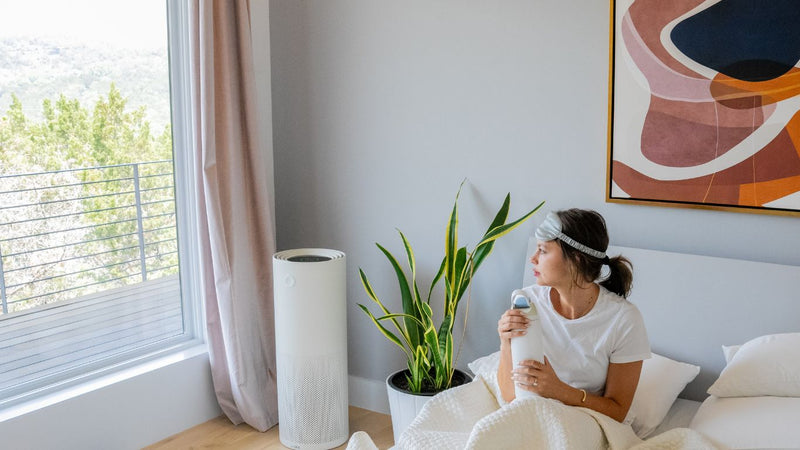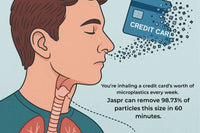What We're Thinking About
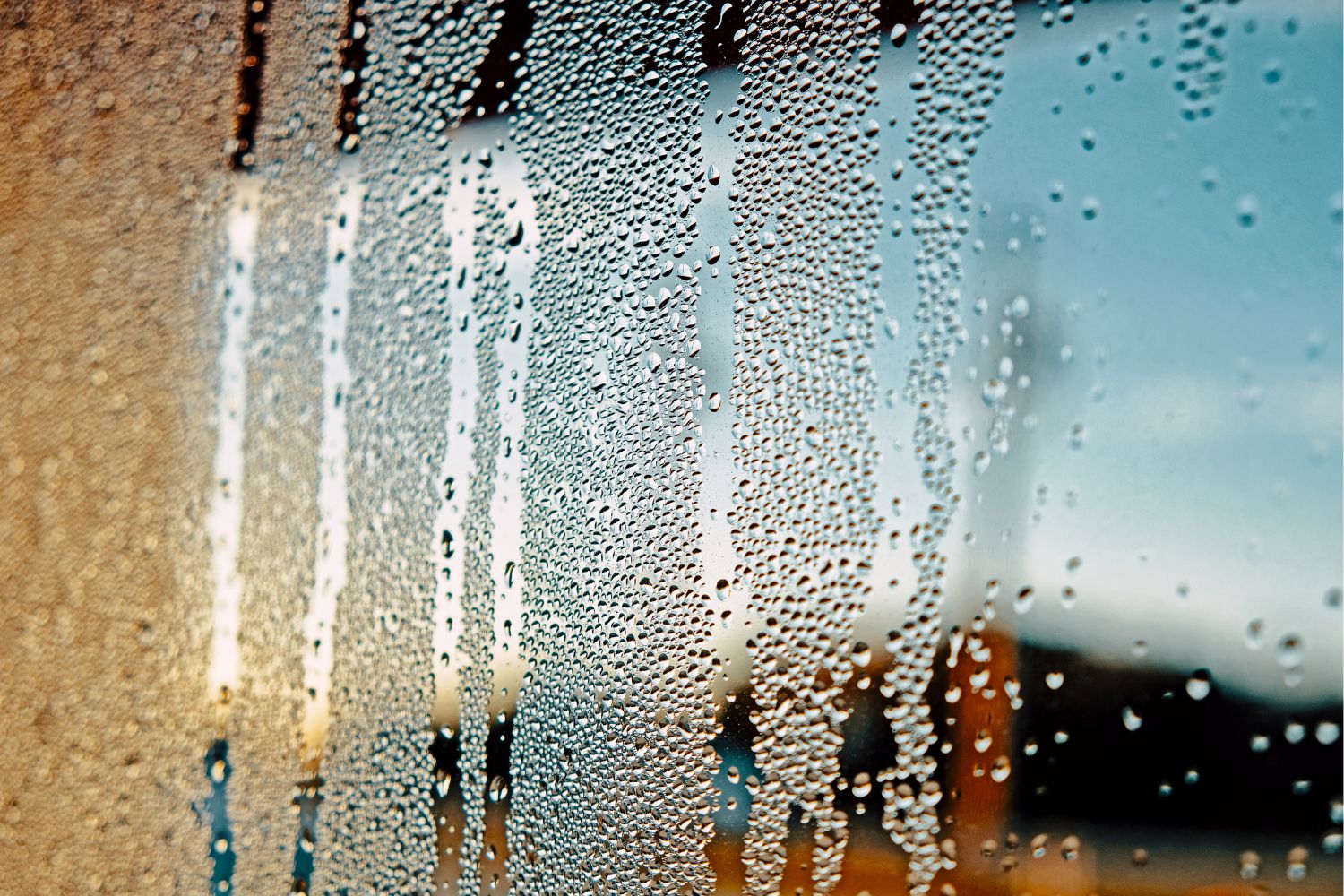
What is Considered High Humidity? Understanding Levels & Risks
What is Considered High Humidity? Everything You Need to Know Ever noticed the air in the room as heavy and sticky? That’s high humidity. When indoor humidity level rises above 60%, it can lead to more than just discomfort - it can be a breeding ground for mold, damage your home, and impact your health. You need to ensure good ventilation and use a dehumidifier and an air purifier in conjunction with a dehumidifier in case you suspect mold due to high humidity. In this blog, we will break down the discussion of high humidity levels into the following sections: What exactly is considered High Humidity? The dangers it brings (hint: Mold is just the beginning) How can you keep your space dry and safe? What Exactly is Considered High Humidity? High humidity is not just an inconvenience - it can impact the comfort of your home and worsen your health. But what exactly is considered high humidity? The term generally refers to high moisture levels in the air, and when the level is above 60%, you enter the “high humidity” zone. Sources of High Humidity Levels To fully understand high humidity, it is important to track household moisture sources. Here are some common sources that can contribute to elevated moisture levels indoors: Steamy showers release a lot of moisture into the air, especially in poorly ventilated bathrooms. Lack of ventilation causes excess moisture to be trapped indoors, particularly in small, enclosed spaces. A leaking roof might go unnoticed but introduces persistent moisture that raises the humidity level. Rainwater can seep through cracks if your home is not adequately sealed. The unventilated kitchen can become a source of high humidity due to steam from boiling water. What Percentage level is considered High Humidity? If you want to know the high humidity level in terms of percentage, you should note that: Anything between 45-55% is considered an optimal humidity level. When this level goes anything closer to or above 60%, it is considered high, and its risk becomes more pronounced. Signs that Your Home Has High Humidity Wondering if your home has high humidity or is at the edge of facing this risk? Look for these obvious signs. Condensation on Windows Stale and Musty Air Visible Mold Growth Warping Wood and Peeling Paint Why High Humidity Levels Need to be Checked Humdity is not just about comfort - though that is a big part of it. High Humidity levels can lead to: Mold Growth: Once humidity surpasses 60%, settled mold spores start producing as they find enough moisture content in the air. They will latch onto anything organic - such as drywall, wood, and carpets and begin to spread. Decreased Air Quality: When moisture lingers in the air, it reduces ventilation and airflow, making the environment feel stagnant and increasing the likelihood of harmful particles, allergens, and bacteria accumulating. Up Next: In the next section, we will explore the dangers associated with High Humidity Levels. The Dangers High Humidity Brings When humidity levels rise, it is not just discomfort you have to worry about - your health and home are also at risk. High moisture content in the air can trigger a range of problems that affect the overall quality of your life. Let’s discuss some dangers associated with excess humidity. Mold and Mildew Growth Mold thrives in the environment with excess moisture, and once it starts growing, it can spread quickly to virtually any organic surface in your home - be it the drywall, your carpets, or furniture. Mold spores in the air can trigger several respiratory issues and impact your health in several ways, such as causing skin problems. The only thing that will effectively help you in such cases would be using a reliable air purifier like Jaspr with activated carbon filters to filter these mold spores. Poor Indoor Air Quality High humidity does not just make the air feel heavy - it contributes to poor air quality. When moisture hangs in the air for too long, it can trap harmful particles such as dust, allergens, and even volatile organic compounds. With high moisture levels, airflow becomes stagnant, making it harder to circulate fresh air through your home. Respiratory Issues When humidity levels are high, it creates a perfect breeding ground for irritants like mold, mildew, and dust mites. Exposure to mold can trigger respiratory issues in people, and even without mold, dampness indoors causes various problems associated with the upper and lower respiratory systems. Skin Problems High humidity content in the indoor air can trap sweat on the surface of your skin, making it difficult for the body to release heat properly. This inability to sweat can lead to blocked pores and increased oil production, leading to breakouts. Increased Volatile Organic Compounds High humidity can accelerate the release of VOCs found in household items like paint, cleaning products, and furniture. VOCs are released at a faster rate, leading to poor indoor air quality and potential health risks. In severe cases, it can also cause damage to the nervous system. Fatigue and Discomfort If the humidity level is high, it can lead to you feeling constantly drained. This is because your body regulates its temperature by sweating, but sweat does not evaporate as efficiently in a humid environment - this leaves your body feeling sluggish and fatigued. High humidity also disrupts your sleep, leading to restless nights and poor sleep quality, as it is important to maintain optimal humidity levels to achieve better quality sleep. How Can You Keep Your Space Dry and Safe? Maintaining a dry and safe environment is crucial for comfort and health. You can implement various effective strategies to manage humidity levels in your home. Invest in a Dehumidifier One of the most effective tools for combating high humidity is a dehumidifier. Here is why you should consider adding one to your home. It draws moisture from the air, lowering humidity levels. Portable dehumidifiers allow you to target specific rooms where humidity is a concern. Use Air Purifiers While dehumidifiers are excellent for controlling moisture, using an air purifier in conjunction will significantly improve the air quality. It will combat any mold infestations that are there due to high moisture content. Air purifiers will filter mold spores, dust, or any other pollutants impacting air quality. Using air purifiers that have activated carbon filters, such as Jaspr will help eliminate odors, chemicals, and gases. Improve Ventilation Proper ventilation is key to preventing humidity buildup. Here is how you can enhance your airflow in your home. Turn on exhaust fans in the kitchen and bathrooms during cooking and showering. When weather allows, open windows to promote air circulation. Keep furniture and other items away from vents and airflow paths. Optimize Air Conditioning Your air conditioner also plays a vital role in reducing humidity. While it cools your home, it removes moisture from the air as part of its cooling process. Keep your home at a comfortable temperature, ideally at 68 degrees Fahrenheit, to help in moisture control. Ensure your AC is functioning properly by changing filters and having it serviced. Final Thoughts Navigating the complexities of high humidity is essential for maintaining a healthy and comfortable home. We explored what constitutes high humidity, pinpointing levels above 60% as a significant threat to mold growth and air quality issues. The dangers are far-reaching, impacting not only your living space but also your health. The good part is that tackling high humidity is not a struggle. By ensuring proper ventilation, utilizing dehumidifiers, and using air purifiers, you can keep your indoor atmosphere dry and safe. FAQs What humidity level is considered too high for my home? A humidity level above 60% is generally considered too high. At this level, the risk of mold growth and other moisture-related issues significantly increases. How can I tell if my home has high humidity? Signs of high humidity include condensation on windows, musty odors, and visible mold or mildew growth. You may also experience allergy and asthma symptoms. Using a hygrometer can also help you measure the humidity level. Can I use a dehumidifier and an air purifier at the same time? Yes! Using a dehumidifier and an air purifier together can enhance air quality in your home. The dehumidifier will reduce excess moisture, making it less hospitable for mold, while the air purifier can clean the air of pollutants and improve air quality indoors. Creating a Healthy Indoor Environment Managing humidity is more than a matter of comfort—it’s an investment in your health, your home, and your overall well-being. By being proactive about maintaining ideal humidity levels (between 45% and 55%), you can prevent mold, protect your home from damage, and enjoy cleaner, fresher air. When in doubt, combine prevention with purification: Control moisture with a dehumidifier Improve airflow through proper ventilation Capture harmful pollutants and mold spores with a high-quality air purifier At Jaspr, we believe that your indoor air should be as pure as possible. Whether you’re tackling high humidity or just looking to breathe cleaner, healthier air, tools like Jaspr can make a real difference. Take control of your air today—because a comfortable, dry, and safe home starts with the air you breathe. Learn more HERE.
Read more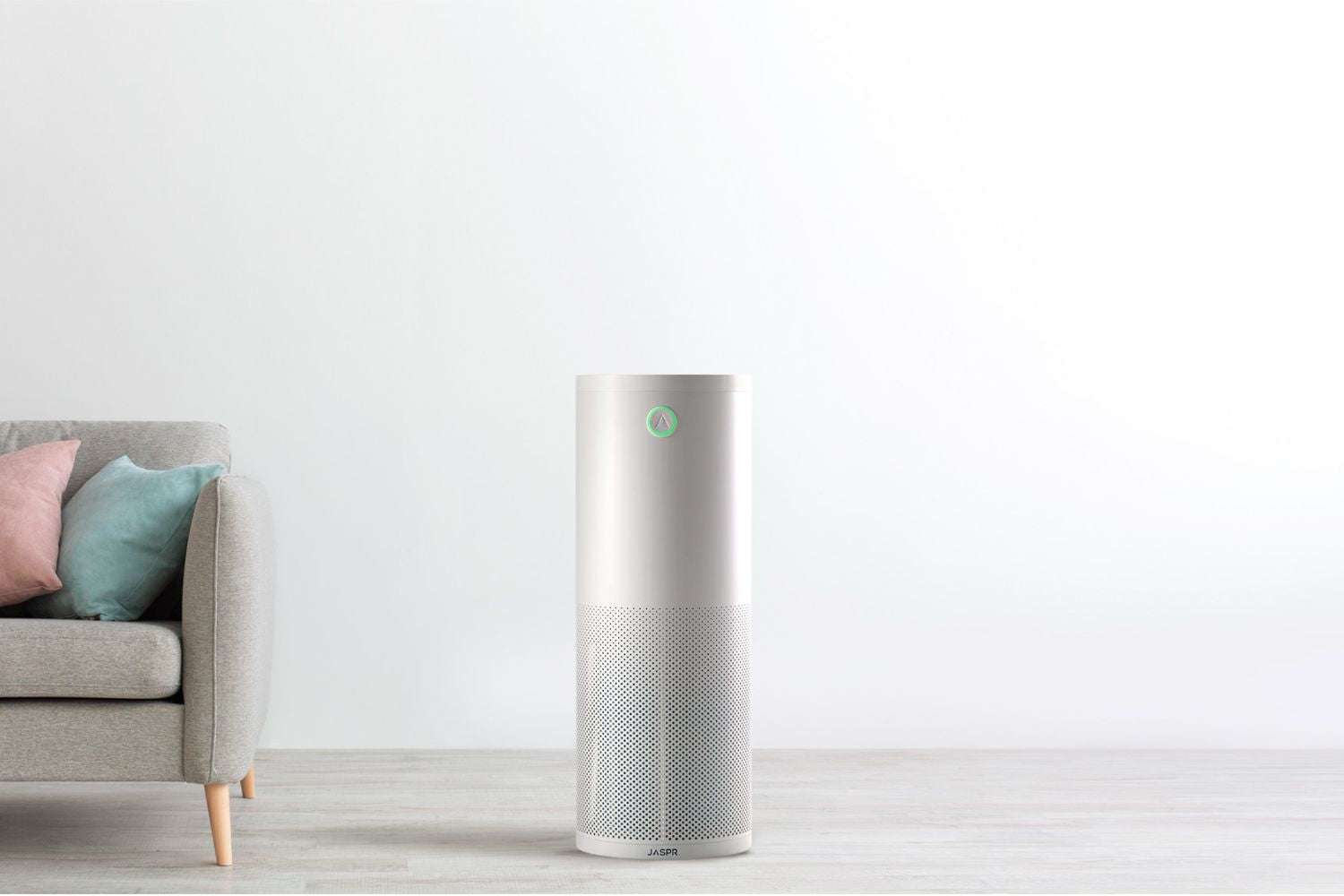
Can Air Purifiers Remove Microplastics?
Jaspr put its air scrubber to the test against microplastics—ultrafine particles increasingly found in the air we breathe. Discover why we ran this study, how we used latex beads to simulate airborne microplastics, and what our lab-tested results revealed about Jaspr’s ability to remove them from indoor air.
Read moreHEPA Explained
Everything you've wanted to know about HEPA (but were too afraid to ask) Posted by Mansour AbdulBaki What is a HEPA filter and how does it work? HEPA stands for High-Efficiency Particulate Air (filter). This is not a marketing claim but an actual certification label with standardized and very strictly tested performance requirements. What makes it a HEPA filter? The performance. During manufacturing, every single HEPA filter is tested 2-3 times each, depending on the certification standard, to ensure it meets the stringent performance required of the HEPA certification which is to capture a minimum of 99.97% of particles that are 0.3 microns in diameter. That particular size is chosen because ratings for these filters are based on the worst-case scenario – meaning that 99.97% is the minimum performance for HEPA filters against ALL particle sizes from the nanoscale to larger particles. How does HEPA work? Simply put, HEPA filtration is a physical process wherein a fan draws in air and drives it through a felt-like mesh of fibers, but don’t think of them like screen door filters. More accurately they are random webs of ceramic microfibers that inherently hold a surface charge to them. Each layer is so thin that the final few-millimeters-thick filter is actually composed of hundreds of layers of these webs - and that is key to their efficacy. Even though there are pathways for air around the fibers, the paths are so convoluted that particles of all different sizes find their way to getting captured by at least 1 of 4 main mechanisms. Each of those mechanisms differs according to the size of the particles in the air. These particle capture regimes and how they work are described below by largest to smallest particles. Sieving – Sieving occurs when fibers are so closely spaced and particles are so large that they cannot geometrically fit through the spaces between fibers and become lodged. This mechanism works predominantly on particles about 2 micron and larger. Particles remain stuck due to physical entrapment. Impaction – Particles of about 0.5 microns or larger are heavy enough that even as air moves through the filter media and changes direction to flow around the fibers, the inertia of these particles carries them forward despite the directional change of the air carrying them, causing them to impact the fibers of the filter and stick in place. These particles remain captured due to electrostatic adhesion. Interception – Medium sized particles without enough inertia to ignore the sudden twisting and turning of the air streams, continue to follow the air flow lines as they go around the filter fibers and are eventually trapped when they come into contact with the fiber along their way around them. The particles remain adhered due to electrostatic and van der Waal interactions. Diffusion – Particles smaller than about 0.25 microns are so light they do not actually flow with the air exactly. They may follow the general direction while also diffusing through the air and the filter pathways until they make contact with a fiber and become trapped through adhesion governed by van der Waal forces. The combined result of the four methods of filtration yields exceptionally high filtration efficiency of micro and nano-particles, with a NASA study confirming that HEPA filters provide “superior performance for removing virtually 100% of particulates”. The reason you will see the metric of trapping 99.97% of 0.3 micron particles is that scientists report the performance of the worst-case scenario. For HEPA filters, there is a phenomenological “weak point” at particles of sizes near 0.3 microns. Particles smaller and larger than this are more easily trapped by a HEPA filter with higher and higher capture efficiency as the particles get further - smaller or larger - from 0.3 microns. So, ratings for these filters are based on the worst-case scenario – meaning that 99.97% is the minimum performance for HEPA filters against ALL particle sizes from the nanoscale to larger particles. Put another way, you will never see more than 0.03% of particles of any size pass through a HEPA filter. For example, if you had 10,000 particles of 0.3 microns in diameter pass through a HEPA filter, a maximum of 3 out of the 10,000 particles would be allowed to pass through the filter. For particles larger and smaller than this size, even at the nanoscale, this would be even less i.e. 0, 1, or 2 particles per every 10,000. If you had 10,000 particles of 0.3 microns in diameter pass through a HEPA filter, a maximum of 3 out of the 10,000 particles would be allowed to pass through the filter. While we at Jaspr have been focused on helping healthcare providers, homeowners and businesses clear the air in their places of work to protect the health and safety of their staff and clients for years now, the spotlight on clean air really started to shine because of COVID-19. A March 2020 study published in the New England Journal of Medicine, showed the COVID-19 virus can stay viable and aerosolized for several hours. So, here is an explanation for the big question: Can HEPA filters capture COVID-19? The short answer is YES. Here’s why: COVID-19 primary particles or "virions" have been measured at about 0.1 microns (~100nm) and HEPA filters capture this range of particle sizes remarkably well ( >99.98% in a single pass). However, primary virus particles are not typically found on their own in the air. Virus particles ejected from an infected person are more likely to be found hitching a ride on larger particles in the form of aerosolized water droplets around 1 micron or larger with some recent studies showing viral material in healthcare air spaces in the >4 micron droplet range. While evaporation occurs for airborne virus-carrying droplets, the viral residues can remain aerosolized. Based on the discussion of HEPA filtration efficiency above, it is clear that, whether as a primary particle or attached to other droplets, HEPA filters can play an important role in significantly reducing the airborne population of virus and virus-carrying aerosols by 99.97% or more. As discussed, of the four capture mechanisms in HEPA filters, the one that dominates for virus-sized particles is diffusion. Larger bioaerosols carrying the virus will be captured through contributions from the diffusion mechanism as well as interception and impaction as the particles in question are larger in size. While HEPA filtration does not eliminate the threat the virus poses to human health, it is clear from the above discussion that HEPA-powered Air Purifiers can be used to reduce the risk of spreading COVID-19. Other protective measures are highly encouraged in conjunction with HEPA-based air purification, including washing hands with soap and warm water for a minimum of 20 seconds, avoiding touching the face, social distancing, and sanitization of possibly contaminated surfaces like tables and clothes using a cleaning spray or wipe. Do I really need to use a HEPA-certified air purifier in my practice or business? With hundreds of scientists around the globe citing data and urging the WHO to recognize that COVID-19 is an airborne biohazard, using a certified HEPA-powered filter to purify the air in at-risk spaces should be part of your standard protocol to protect the health of your patients, clients, and staff from this and other microbiological vectors to – just like your protocols for cleaning and sanitizing surfaces. Moreover, active air purification is becoming both an expectation from the public and a compliance requirement from governing and professional organizations. In the wake of COVID-19, many industry bodies are releasing guidelines around air quality in health practices, schools, and businesses. While many of these guidelines provide differing advice, one thing remains consistent: the importance of HEPA filtration. Ready to provide your clients and loved ones with a clean-air environment? Check out Jaspr.co
Read more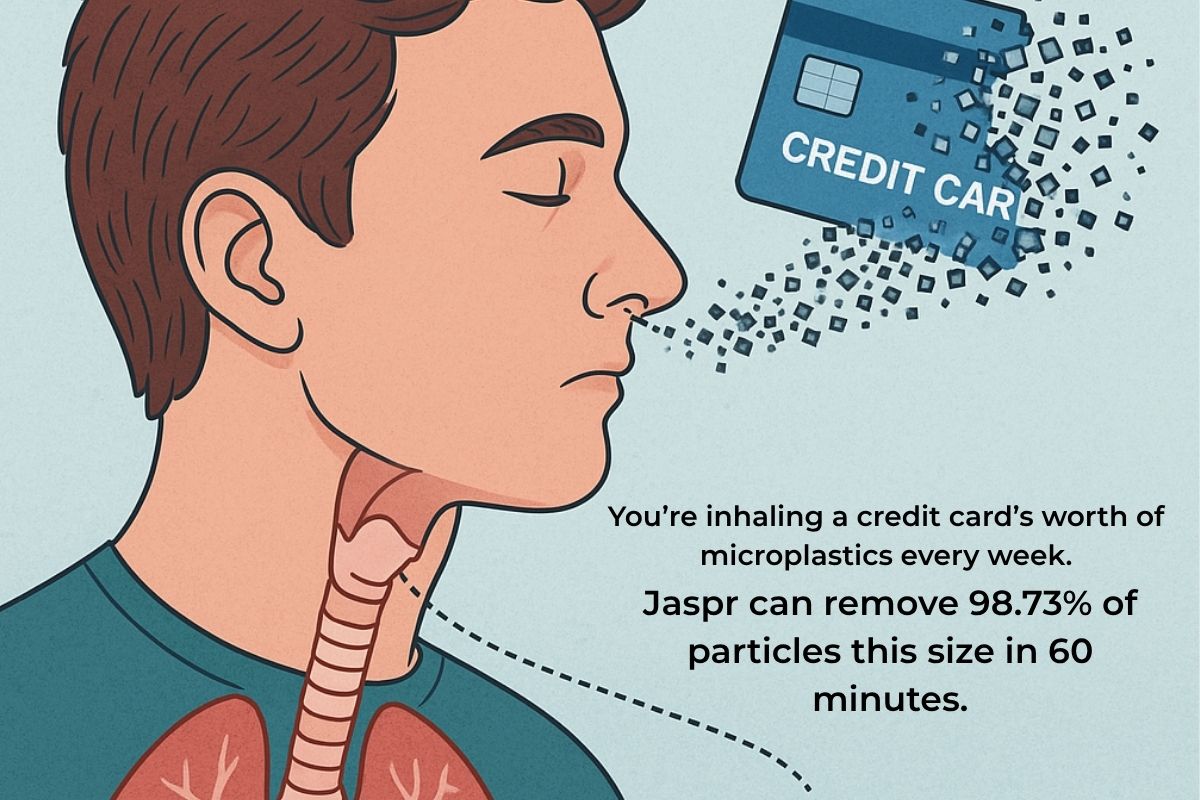
🧫 You’re Breathing Microplastics — Here’s What You Can Do About It
Microplastics aren’t just in oceans—they’re in the air you breathe. This article explains how they get into your home, the hidden health risks, and how Jaspr’s independently tested air scrubber removes 98.73% of microplastic-sized particles.
Read more
Air Scrubber vs. Air Purifier: Understanding the Difference and Why It Matters for Your Home
Discover the difference between air purifiers and air scrubbers. Learn why Jaspr is the only true commercial-grade air scrubber designed for residential use.
Read more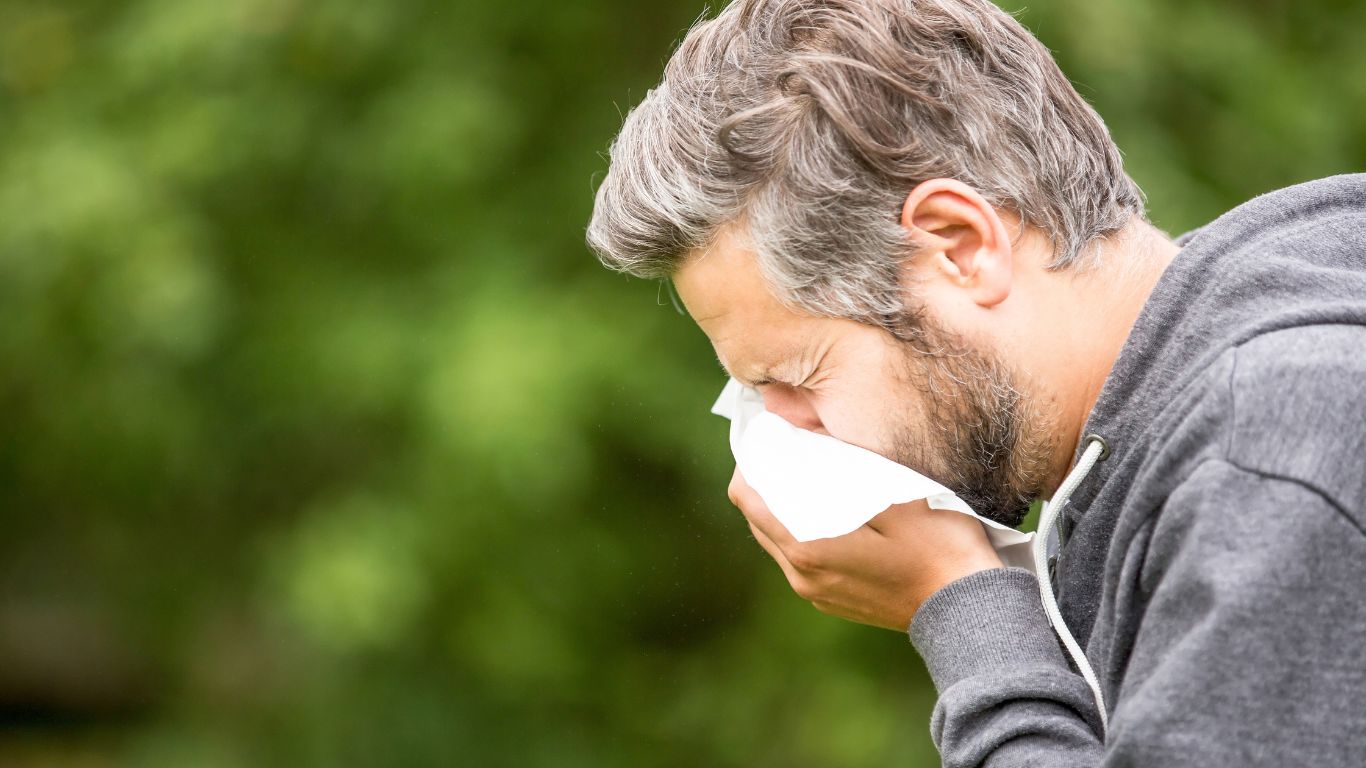
Cedar Fever in Austin: What It Is, Why It’s Brutal, and How to Protect Your Home
If you’ve lived in Austin for more than a minute, you’ve probably heard someone complain about “cedar fever.” Maybe you’ve even experienced it firsthand—waking up in the middle of winter with itchy eyes, a runny nose, and a sore throat that feels suspiciously like the start of a cold. But it’s not a cold. It’s cedar fever, and in Central Texas, it hits harder than almost anywhere else in the country. As a local Austin company dedicated to helping people breathe better indoors, we at Jaspr know just how miserable cedar fever can be. In this post, we’ll break down everything you need to know about this seasonal allergy nightmare—and how to take real steps toward relief, especially at home. What Is Cedar Fever? Cedar fever isn’t a virus, and despite the name, it doesn’t usually involve a fever. It’s actually a seasonal allergic reaction to pollen released by Ashe juniper trees , which are commonly (but inaccurately) referred to as “mountain cedars.” These trees are native to Central Texas and release a massive amount of pollen into the air every winter. In fact, each tree can release millions of pollen grains per day during peak season, which is why the sky sometimes looks smoky or yellow—those aren’t clouds, they’re literal waves of pollen. When Is Cedar Fever Season in Austin? Cedar season typically runs from mid-December through early March , with peak pollen levels in January . The worst days usually come right after a cold front, when dry, windy air causes the trees to burst open and release their pollen all at once. Pollen counts during this season are some of the highest in the entire country , which is why even people who don’t usually suffer from seasonal allergies often feel the effects while living in Austin. Symptoms of Cedar Fever Cedar fever symptoms often mimic the flu or a cold, leading many people to misdiagnose what’s really going on—especially during the pandemic years when anything with a sore throat sent us into high alert. Here’s what you might experience: Sneezing fits Runny or congested nose Itchy, watery, or burning eyes Post-nasal drip Coughing Sore throat (often from sinus drainage) Fatigue or low energy Mild headache or sinus pressure Occasional low-grade fever (rare, but possible) One of the most frustrating aspects of cedar fever is how it disrupts sleep and daily comfort. You might feel fine in the morning, but by the afternoon, your symptoms flare up. Or you might toss and turn at night due to congestion, only to wake up feeling even worse. Why Cedar Fever Is So Bad in Austin 1. The Trees Themselves Ashe juniper (aka mountain cedar) trees are extremely common in the Texas Hill Country and surrounding regions. These trees thrive in dry, rocky soil, and they cover thousands of acres across Central Texas. They're here to stay—and they shed pollen like it's their job. 2. The Weather Austin’s dry, windy winters make it easy for pollen to travel. Cold fronts, in particular, act like pollen-launchers—cracking open the trees and sending clouds of pollen flying through the air. If you’ve ever walked outside and seen what looks like yellow smoke coming from the trees, you’ve witnessed a pollen release in action. 3. The Terrain Austin’s geography, with its rolling hills and deep valleys, allows pollen to settle and linger in the air. It gets trapped in the atmosphere and around your home, making it hard to escape—even when you're indoors. How Cedar Pollen Gets Inside Your Home Even if you keep your windows closed and stay indoors during peak pollen days, cedar pollen can still make its way inside: On your clothes and hair: After spending time outside, pollen clings to your clothing and gets tracked inside. Through open doors and windows: Even brief ventilation can invite pollen in, especially if it’s windy. On pets: Dogs and cats that go outdoors often bring pollen back in on their fur. Through HVAC systems: Without high-efficiency filters, many HVAC systems circulate outdoor air containing allergens. Once inside, cedar pollen doesn’t just go away. It settles into carpets, furniture, bedding, and surfaces—contributing to ongoing symptoms even after outdoor counts drop. How to Protect Yourself From Cedar Fever Fighting back against cedar fever takes a combination of prevention, indoor air protection, and symptom management . ✅ Check the Pollen Forecast Sites like Pollen.com or local allergy trackers like KVUE or KXAN will tell you when pollen counts are highest. Plan your outdoor time accordingly and avoid strenuous activity on peak days. ✅ Keep Doors and Windows Closed It might be tempting to enjoy the cool winter air, but doing so can invite pollen in. Keep your home sealed as much as possible during cedar season. ✅ Change Clothes and Shower After spending time outside, remove your clothes and shower to remove pollen from your body and hair. This reduces the spread of allergens inside your home. ✅ Clean Your Home Often Dust, vacuum with a HEPA filter, and wash bedding frequently to minimize pollen buildup indoors. ✅ Use a High-Performance Air Purifier This is where Jaspr makes a difference. Why Austinites Choose Jaspr for Cedar Season Jaspr is a local Austin business, by people who know how rough cedar season gets. Our high-performance air purifier is designed to remove 99.97% of airborne particles, including the microscopic cedar pollen that triggers allergy symptoms. Here’s why Jaspr is different: Real-time air quality monitoring that automatically adjusts when pollen levels spike Whisper-quiet performance, even while you sleep Cleans 1,500 sq ft in under 30 minutes No app required—just plug in and breathe easy Commercial-grade filtration in a sleek, home-friendly design Final Thoughts Cedar fever might be part of the Austin experience—but suffering through it doesn’t have to be. With a few smart steps and the right protection, you can take back your air and feel like yourself again. Breathe easy this season—with help from your local Austin air experts. 👉 Shop the Jaspr Air Purifier
Read more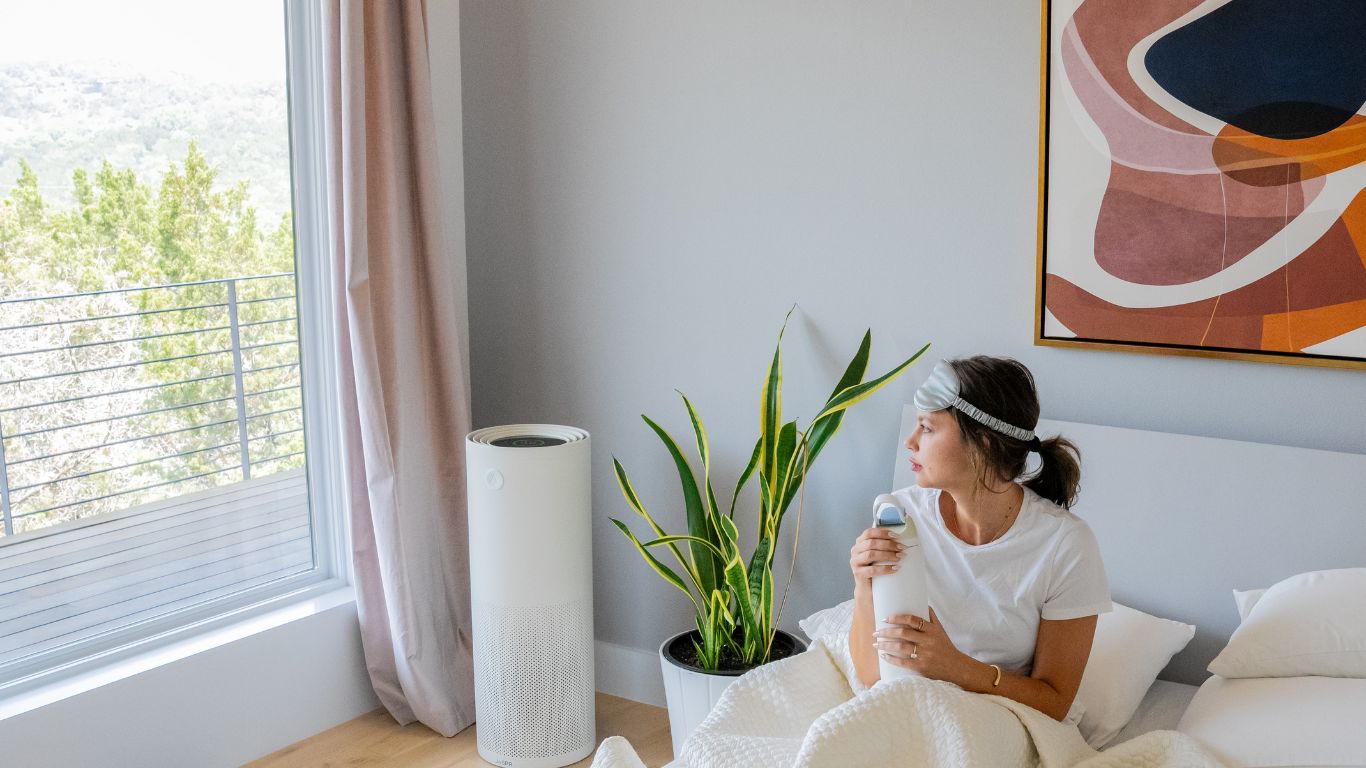
The Benefits of Having an Air Purifier in Your Bedroom
The Benefits of Having an Air Purifier in Your Bedroom The bedroom is where we spend a third of our lives, making it essential for rest and rejuvenation. However, airborne particles like dust, allergens, and pollutants can disrupt sleep and impact health. Adding an air purifier to your bedroom can create a cleaner, more comfortable space, enhancing sleep quality and overall wellness. Here are the top benefits of having an air purifier in your bedroom. 1. Improved Sleep Quality Clean, fresh air has been shown to improve sleep. Pollutants like dust mites, pet dander, pollen, and mold spores can trigger allergies, cause nasal congestion, and disrupt breathing during sleep. An air purifier filters out these allergens, reducing night-time congestion and allowing for deeper, uninterrupted sleep. Key Benefit: Many users report fewer disturbances and more restful sleep when they add an air purifier to their bedroom. 2. Reduced Allergies and Asthma Symptoms Allergens can trigger symptoms like sneezing, coughing, and itchy eyes, making it harder to fall and stay asleep. For those with asthma, airborne particles can lead to night-time wheezing and breathlessness. High-efficiency air purifiers with HEPA filters can trap up to 99.97% of allergens and irritants, helping to minimize asthma symptoms and provide relief for allergy sufferers. Key Benefit: Cleaner air can lessen the frequency and severity of allergy and asthma symptoms, particularly during peak allergy seasons. 3. Less Dust and Easier Cleaning Dust accumulates quickly, especially in the bedroom. It settles on surfaces, irritates the respiratory system, and can lead to a constant need for cleaning. An air purifier can reduce airborne dust particles, leading to a noticeable decrease in dust buildup. Key Benefit: Enjoy a cleaner bedroom environment with less time spent dusting and a lower chance of respiratory irritation from dust particles. 4. Reduced Exposure to VOCs and Indoor Pollutants Bedrooms often contain sources of volatile organic compounds (VOCs), such as mattresses, furniture, and carpeting, which can emit low levels of chemicals over time. Air purifiers with activated carbon filters are effective at capturing VOCs and other indoor pollutants, helping to maintain a safer, toxin-free bedroom environment. Key Benefit: Cleaner air, free from chemical pollutants, supports long-term health and reduces the risk of respiratory discomfort from VOCs. 5. Elimination of Odors and Fresh, Inviting Air Odors from pets, cooking, and household products can linger in bedrooms, affecting comfort. An air purifier helps remove odors, leaving the air feeling fresher. This is especially useful for pet owners or those sensitive to smells, as it creates a more pleasant and relaxing bedroom environment. Key Benefit: By neutralizing odors, air purifiers create a fresh, welcoming space that enhances relaxation and comfort. 6. Increased Comfort for Pets and Their Owners If you share your bedroom with pets, an air purifier can be a game-changer. Pets shed dander, hair, and other particles that can irritate allergies and asthma. Air purifiers help capture pet-related allergens, keeping the air cleaner and ensuring a more comfortable sleeping environment for both you and your furry friends. Key Benefit: Enjoy pet companionship without the constant irritation of pet dander and allergens in the air. 7. Better Protection During Flu and Allergy Seasons During flu season, air purifiers can capture viruses and bacteria in the air, reducing the chance of airborne illness spread. For allergy sufferers, an air purifier can help remove pollen and other seasonal allergens, creating a sanctuary for relief from outdoor irritants. Key Benefit: Air purifiers provide year-round support, but they’re especially beneficial during high-risk seasons like flu and allergy times. Key Takeaways Placing an air purifier in your bedroom offers multiple benefits, including: • Better sleep quality and reduced allergies • Less dust and cleaner surfaces • Fewer odors and fresher air • Pet-friendly air quality • Added protection during flu and allergy seasons At Jaspr, we specialize in high-quality air purifiers designed to enhance indoor air in every room. Explore our selection to find the perfect model for your bedroom and start enjoying cleaner, healthier air tonight.
Read more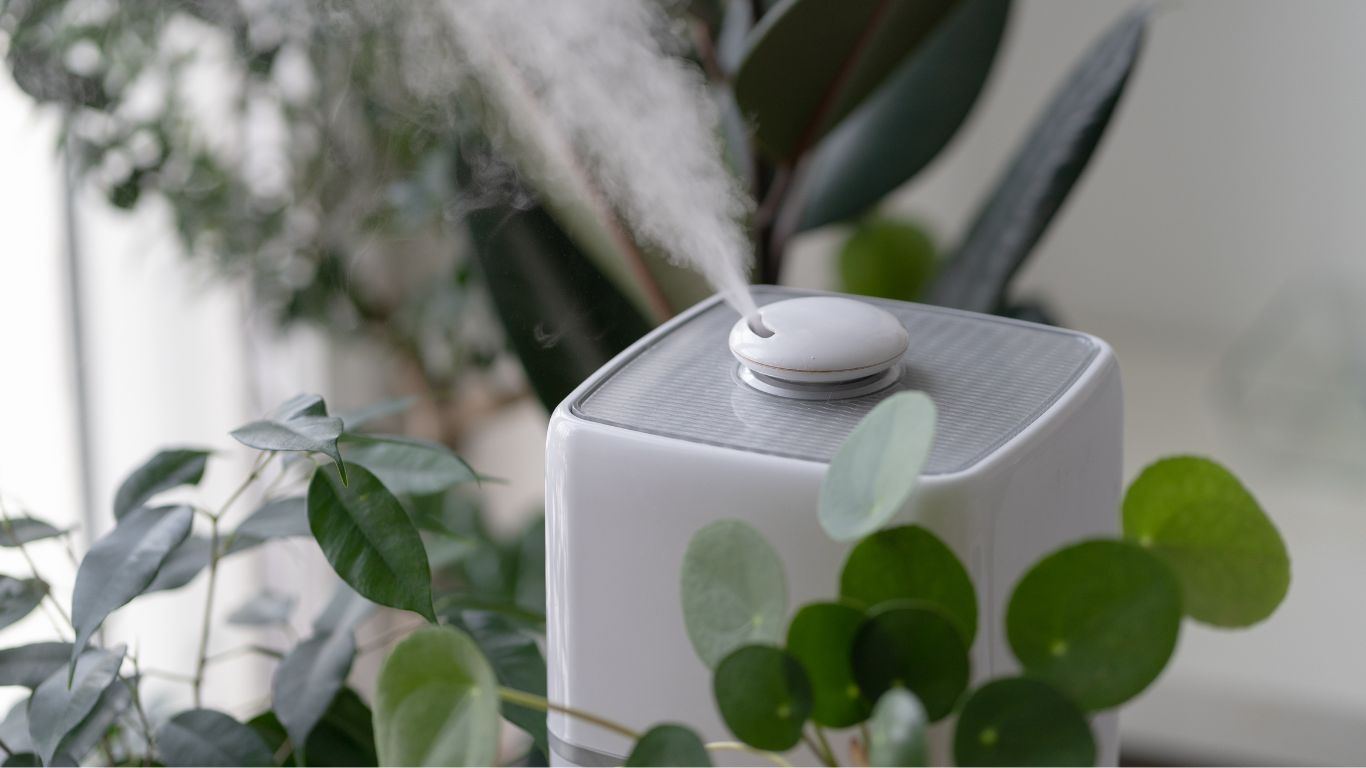
Do Air Purifiers Dry the Air and Help with Humidity?
Air purifiers are designed to improve indoor air quality by capturing airborne particles like dust, allergens, mold spores, and even odors. But many wonder if air purifiers also impact humidity levels—specifically, if they dry out the air or can help reduce excess humidity.
Read more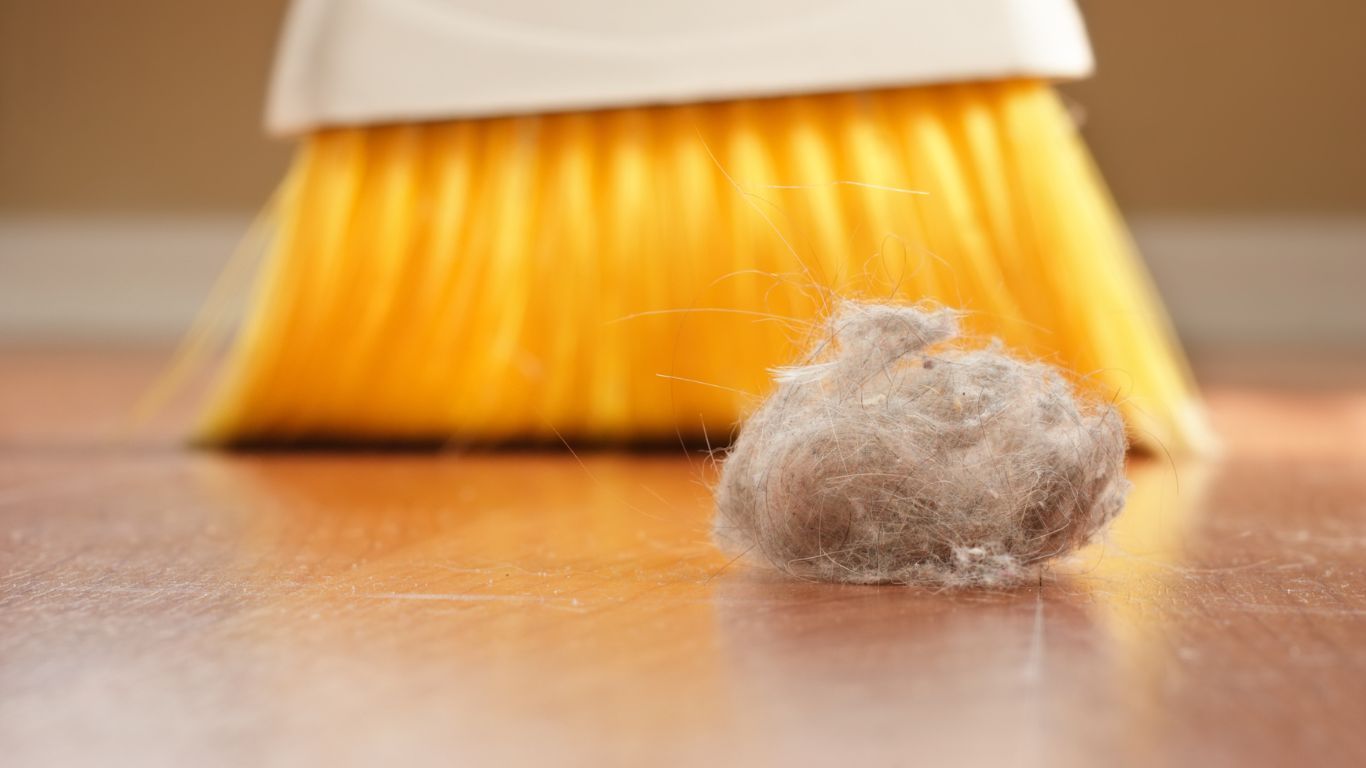
Does Dust in My Home Mean I Have Bad Indoor Air Quality?
If you’ve ever noticed a layer of dust settling on your furniture, you might have wondered: does this mean I have poor indoor air quality? While dust is a common household nuisance, it can be more than just an aesthetic issue. It may be a sign of underlying air quality problems that could impact your health.
Read more
